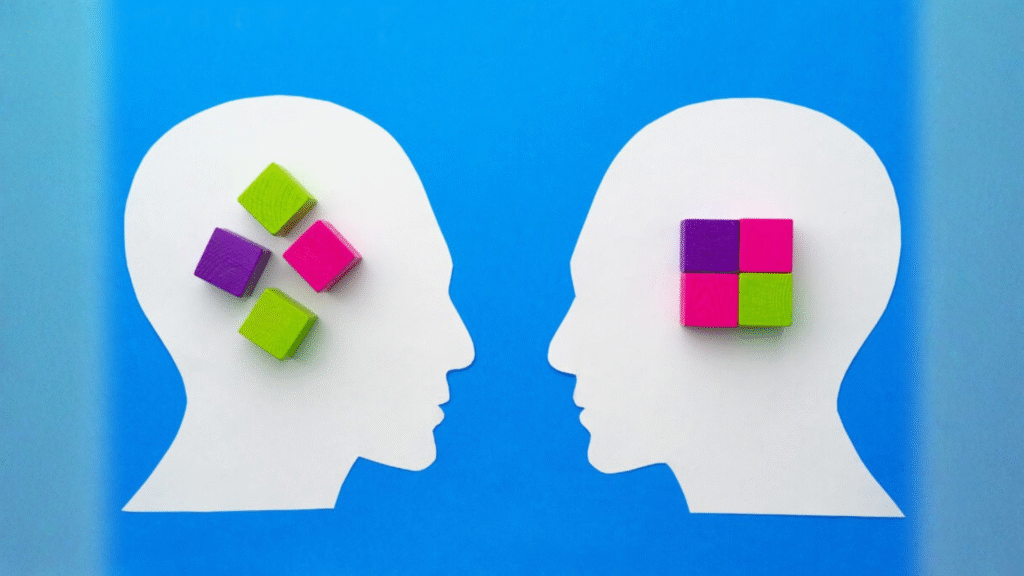Humans communicate through emotion, subtext, and shared cultural understanding. AI models process language through pattern recognition, statistical relationships, and token-based analysis.
This fundamental difference explains why some people consistently get exceptional AI results while others struggle with mediocre outputs using identical tools.
The secret isn’t better prompts—it’s understanding AI psychology and adapting your communication style to how AI models actually think.
Understanding AI Model Psychology

How AI Models Process Language
- Pattern Recognition Over Meaning: AI models don’t “understand” language like humans. They identify statistical patterns in text that correlate with successful outcomes based on training data.
- Token-Based Processing: AI models break language into tokens and analyze relationships between these elements rather than grasping conceptual meaning.
- Context Window Limitations: Unlike human memory, AI models work within finite context windows—they can only “remember” a specific amount of recent conversation.
- Probabilistic Response Generation: AI outputs represent statistical predictions of what should come next based on patterns, not conscious creative decisions.
The AI “Personality” Spectrum
Research shows that different AI models exhibit distinct communication patterns based on their training methodologies.
Conversational Models (GPT family):
- Excel at maintaining dialogue flow and human-like interaction
- Respond well to collaborative, conversational prompting
- Prefer detailed context and background information
- Generate creative, expansive responses
Analytical Models (Claude family):
- Optimize for logical reasoning and structured thinking
- Respond better to step-by-step instructions and clear parameters
- Excel at breaking down complex problems systematically
- Prefer precise, technical communication styles
The Communication Adaptation Framework

Structural Communication Principles
- Linear Information Architecture: Present information in logical sequence rather than scattered throughout your communication. AI models process information sequentially and perform better with organized input.
- Explicit Rather Than Implicit: State requirements directly instead of expecting AI models to infer unstated preferences or cultural assumptions.
- Context Front-Loading: Provide essential background information early in interactions rather than introducing context mid-conversation.
- Consistent Terminology: Use identical terms throughout interactions rather than synonyms that might confuse pattern recognition systems.
Psychological Alignment Strategies
Match AI Processing Style:
- For creative tasks: Use expansive, collaborative language that encourages exploration
- For analytical work: Employ structured, step-by-step communication
- For technical tasks: Apply domain-specific terminology and precise specifications
Leverage Pattern Recognition: Provide examples of desired outputs so AI models can identify and replicate successful patterns rather than creating from abstract descriptions.
Practical AI Communication Techniques

The Psychology of Instruction Design
- Role Assignment Psychology: AI models perform better when given specific roles because it activates training patterns associated with that expertise area.
- Instead of: “Write about marketing” Try: “You are a senior marketing strategist with 10 years B2B experience. Analyze this market situation…”
- Constraint Psychology: AI models often produce more creative results when given specific constraints rather than complete freedom.
- Instead of: “Be creative” Try: “Generate 5 unique approaches using only visual metaphors and under 100 words each”
- Collaborative Psychology: Framing AI interactions as collaborative partnerships rather than command-response relationships often yields more nuanced outputs.
- Instead of: “Tell me the best solution” Try: “Let’s work together to identify the optimal approach. What factors should we consider?”
Understanding AI Model Limitations
- Cognitive Biases: AI models inherit biases from training data and can exhibit “preference patterns” that affect output quality.
- Confidence vs. Accuracy Gap: AI models may express high confidence in incorrect information—understanding this helps you request verification and cross-checking.
- Creative vs. Factual Processing: Different types of requests activate different AI processing pathways—creative tasks benefit from expansive prompting while factual requests need precise, constrained communication.
How Qolaba Facilitates AI Communication Mastery

Multi-Model Psychology Insights
Qolaba’s unified platform provides access to 60+ AI models with different communication styles and psychological profiles, enabling teams to understand and leverage diverse AI personalities.
Benefits:
- Model-Specific Optimization: Learn which communication styles work best with different AI architectures
- Comparative Psychology: Observe how identical requests produce different results across AI models
- Interaction Pattern Analysis: Track which communication approaches consistently deliver superior results
Team Communication Libraries
Collaborative Learning:
- Shared Templates: Teams develop and share effective AI communication patterns
- Psychology Documentation: Capture insights about different AI model communication preferences
- Success Pattern Recognition: Identify and replicate approaches that consistently produce excellent results
Real-Time Optimization
Adaptive Features:
- Smart Model Routing: Automatic recommendation of AI models based on communication style and task requirements
- Communication Analytics: Track which interaction patterns produce best results
- Team Training Integration: Built-in guidance for adapting communication styles to different AI personalities
Advanced Communication Psychology

The Anthropomorphism Trap
- Common Mistake: Assuming AI models think, feel, or understand like humans.
- Psychological Reality: AI models simulate human-like responses without actual consciousness or emotional understanding.
- Communication Adjustment: Treat AI as sophisticated pattern matching systems while maintaining collaborative language that activates helpful response patterns.
Feedback Loop Psychology
- AI Learning Limitation: Individual AI models don’t learn from your specific interactions like humans do.
- Communication Strategy: Optimize each interaction as standalone rather than expecting AI models to remember previous lessons.
The Strategic Communication Advantage

Organizations that master AI communication psychology gain significant competitive advantages:
- Productivity Multiplication: Teams achieve 3-5x better AI results through psychologically-informed communication approaches
- Innovation Acceleration: Understanding AI model thinking unlocks creative applications that casual users miss
- Quality Consistency: Systematic communication approaches produce reliable, predictable AI outputs
- Team Scaling: Communication expertise transfers across team members, multiplying organizational effectiveness
Master AI psychology, and AI becomes a predictable, powerful business tool rather than an inconsistent creative experiment.
Transform AI interactions through psychological understanding and systematic communication mastery with Qolaba.





